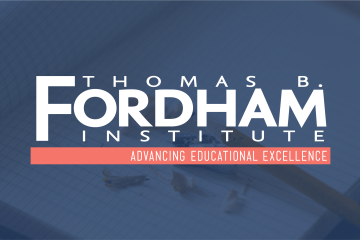According to a report issued by the OECD in 2018, school closures are an inevitable consequence of declining populations of school-age children across much of the world, and the United States is not immune to the trend. Inevitably, this reality will require more and more closures in the fastest-shrinking regions and states. State, district, and local leaders would do well to plan ahead, utilizing as much high-quality data as possible to inform their efforts. A study out of Texas gives us a good idea of how closures impact students while also waving cautionary flags.
Jeonghyeok Kim, a researcher from the University of Houston, looks at a sample of 470 public school closures in the Lone Star State between 1998 and 2015. Data on schools include grade levels served, student performance on the Texas Assessment of Academic Skills (TAAS) and its successor (the Texas Assessment of Knowledge and Skills (TAKS)), disciplinary actions, absenteeism, and high school graduations. These data are observed for three years before and two years after the closure of each school in the sample. Student-level data include enrollment (or not) at a Texas four-year college; earning a bachelor’s degree (or not) from a Texas institution by age twenty-six; and employment status, industry sector, and earnings.
Kim uses two difference-in-differences models to compare the changes in outcomes among students affected by school closures with those who were not. The control schools share similar observable characteristics on twelve NCES variables with the closed schools at time of closure, then they are matched by group using a “nearest-neighbor” matching method, which also matches schools on their share of Black, Hispanic, and low-income students. Short run analyses track the same students over five years to see immediate impacts while long-run analyses (through age twenty-seven) examine how closures affect entire graduating classes. They compare cohorts that experienced closure with older cohorts from the same school that graduated within the last three years, relative to cohorts at matched control schools that didn’t close.
In the short run, there was a small decline in students’ standardized math and reading scores following school closure, both of which subsequently recover within three years. There is also a 0.2 day increase in student absences immediately after closure, which persists for four years post-closure. Closures also result in a 0.3 day increase in the duration of disciplinary actions right after closure, which further rises to 0.9 days four years post-closure.
Kim looks to see how school quality may play a role, as determined by the average math and reading scores of each school over the four years preceding closure. Looking at the difference in quality between a closed school and the nearest school, he finds that students displaced to worse-performing schools experience a larger drop in test scores (0.06 of a standard deviation, or SD), while students displaced to better-performing schools experience a smaller, statistically insignificant drop in test scores.
Next, he excludes from the analysis those students new to a school after being displaced from their now-closed school. He found that the scores of peers in “receiving” schools decreased by about 0.18 SD right after closure (and improve but do not fully recover after three years).
Finally, Kim compares younger cohorts who experience school closures to older cohorts who do not. These long-run analyses show that the cohorts saw overall negative effects on several post-secondary education and labor market outcomes. For instance, experiencing school closure decreased the likelihood of graduating from high school by 1 percentage point and enrolling in a four-year college by 1.2 percentage points. It also led to $793 (3.6 percent) lower annual earnings at ages twenty-five to twenty-seven. Adverse effects were less pronounced for students at the high end of the grade band, who tended to be in the terminal grade and would have experienced a school move even in the absence of closures.
While these effects are statistically modest, their cumulative impact on individuals makes them significant in the real world. For instance, an annual earning loss of roughly $800 over a decade amounts to $8,000 in lost income per individual.
So, if future closures are inevitable due to enrollment decreases, district leaders must learn to mitigate the harm to both displaced students and students at receiving schools. First, they should provide ample notice—ideally a year in advance—so that families have time to explore alternatives and prepare for the transition. Whenever possible, assign students from closed schools to higher-performing schools. And last, think about how to move students. Perhaps soon-to-close middle schools could hold onto their youngest students longer but allow the oldest students to age out and move on organically. Honestly, any strategy is preferable over resisting the inevitable until financial ruin compels you to move quickly and without forethought.
SOURCE: Jeonghyeok Kim, “The long shadow of school closures: Impacts on students’ educational and labor market outcomes,” Annenberg Institute at Brown University (May 2024).




